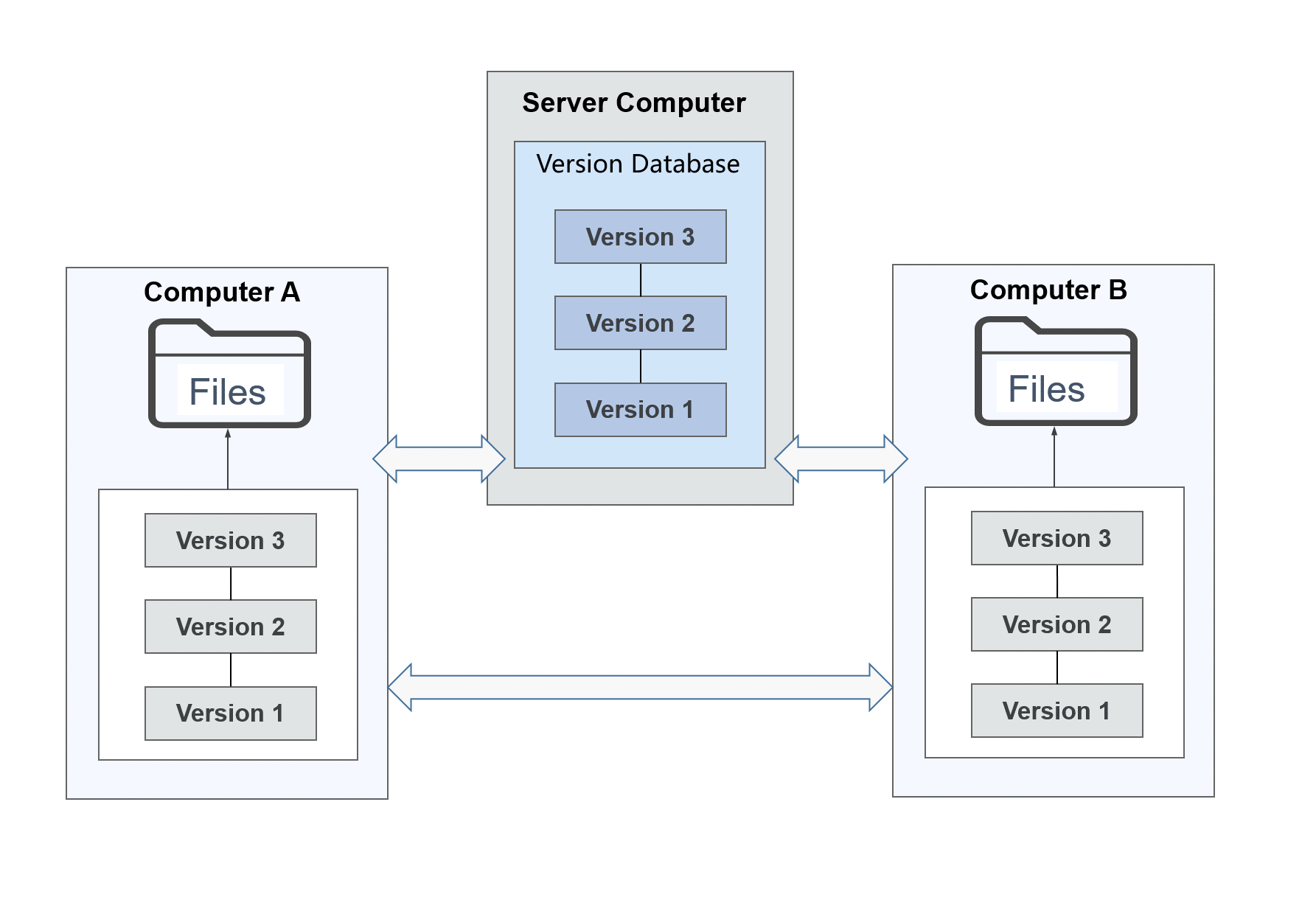Overview
Purpose
This document is intended to help developers who are interested in Git to better use Git and apply Git in the CodeArts practice.
Git Overview
Git is a distributed version control system (VCS). VCSs manage all code revisions during software development. They store and track changes to files, and records the development and maintenance of multiple versions. In fact, they can be used to manage any helpful documents apart from code files. VCSs are classified into centralized version control systems (CVCSs) and distributed version control systems (DVCSs).
Centralized Version Control Systems
A CVCS has a central server that contains all development data, and a number of clients that store snapshots of the files in the central server at one point. That means the change history of project files is kept only in the central server, but not on the clients. Therefore, developers must pull the latest version of files from the central server each time before starting their work.

Common CVCSs include CVS, VSS, SVN, and ClearCase.
The advantages and disadvantages of CVCSs are listed below.
|
Advantages |
Disadvantages |
|---|---|
|
|
Distributed Version Control Systems
In DVCSs, every client is a complete mirror of the code repository. All data, including the change history of project files, is stored on each client. In other words, there is not a central server in this distributed system. Some companies which use Git may call a computer as the "central server". However, that "central server" is in nature the same as other clients except for the fact that it is used to manage collaboration.

Common DVCSs include Git, Mercurial, Bazaar, and BitKeeper.
The advantages and disadvantages of DVCSs are listed below.
|
Advantages |
Disadvantages |
|---|---|
|
|
Feedback
Was this page helpful?
Provide feedbackThank you very much for your feedback. We will continue working to improve the documentation.See the reply and handling status in My Cloud VOC.
For any further questions, feel free to contact us through the chatbot.
Chatbot





